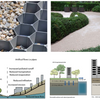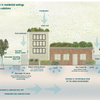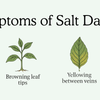Reducing water use and watering frequency with wicking beds

Posted on: 2 November 2018
Looking at our tomato plants from our last post consider the following.
Conventional thinking is that:
- In the early growing season, for about the 1st 4 weeks after planting your seedlings, you should water your tomatoes daily in the morning;
- At this time you should be giving your tomatoes about 30 litres per square metre per week, or a bit over 4 litres or half a standard 9 litre watering can per day. This will increase as they grow;
- As the temperatures warm up, from about 5 weeks after planting, and your plants grow, you should be watering them twice a day to maintain consistency of moisture;
- As they develop, your plants will need increased water of up to 60 litres per week or a bit over half a watering can twice a day;
- In order not to over water your tomatoes, you need to calculate the volume of any rain that has fallen and deduct this from your manual watering calculations; and
- Depending on the variety, your tomatoes will take around 12 to 14 weeks to fruit from the time you plant your seedlings.
If we assume 12 weeks, this means that by the time you have picked your tomatoes you will have watered your plants 140 times and given them about 600 litres of water less any amounts of rain calculated. This calculation is reasonably simple 1mm of rain equates to 1 litre of water per square metre.
For my WaterUps® wicking bed, that I planted with tomatoes on 19th August, the comparison is amazing. After filling the wicking bed and surface watering of the seedlings with 4 litres on day 1, I gave the seedlings half a watering can on each of following 3 days. I have not in fact had to refill the wicking bed yet, given that we have had a couple of weeks of good rain. With the rain the reservoir is still about half full.
Normally, the WaterUps® wicking bed would need to be refilled about once a month and would be expected to use around 372 litres of water per square metre over the 12 weeks to grow my tomatoes.
Which would you rather do? Try to calculate the optimal amount of water your tomatoes need each day, taking into account the prevailing weather conditions, or leave to your plants to decide themselves?
In Australia, households use between 181 - 591 L a day depending on on time of year and number of people in the house hold (1 -5). Source.
Generally, watering of residential gardens can take up to half of the daily water consumption. Using a wicking bed to grow your food will reduce water usage, helping us to live more sustainably. So, as can be seen – a wicking bed using the WaterUps® cells reduces water use, saves time and helps provide a truly sustainable watering solution.








